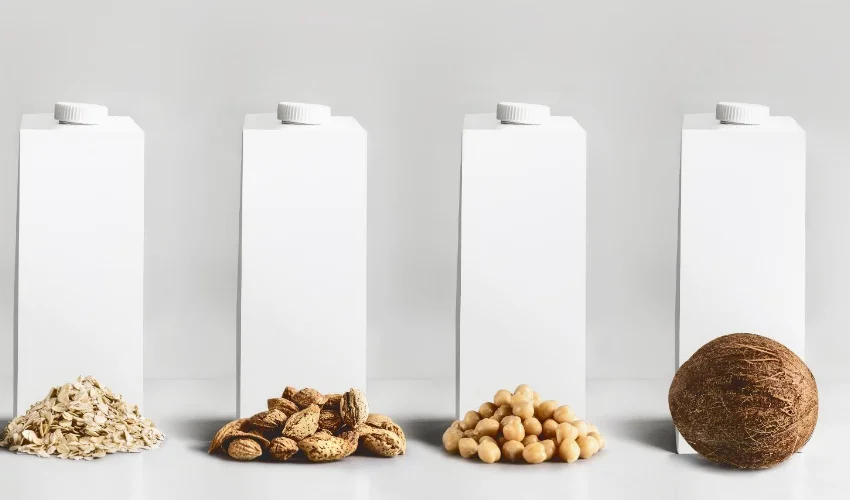Traveling can be an exciting and enriching experience, but for individuals with diabetes, it requires careful planning and preparation. One crucial aspect of travel planning is ensuring that you have all the necessary diabetes supplies and medications to manage your condition while away from home. In this article, we will provide you with a comprehensive guide on how to pack your diabetes supplies and medications for travel, ensuring a smooth and stress-free journey.
Know Your Diabetes Supplies
Before embarking on your trip, it’s important to take stock of your diabetes supplies and ensure you have an adequate quantity of each item. Here are some essential diabetes supplies you should consider packing:
Blood glucose monitoring devices and test strips: These are vital for checking your blood sugar levels. Make sure you have a reliable blood glucose meter, sufficient test strips, and extra batteries if needed.
Insulin delivery systems: Depending on your prescribed method, you may need to pack insulin syringes, insulin pens, or an insulin pump. Ensure you have enough supplies for your entire trip.
Extra insulin and/or oral medications: It’s crucial to pack more than enough insulin or oral medications to cover the duration of your trip. Consider factors such as changes in insulin requirements due to increased activity levels or dietary changes.
Lancets, alcohol swabs, and sharps containers: These items are essential for safe and hygienic blood glucose testing. Pack an adequate supply of lancets, alcohol swabs for cleaning the injection site, and a sharps container for safe disposal of used needles and lancets.
Glucose tablets or snacks: These can be lifesavers in case of low blood sugar episodes. Pack glucose tablets or fast-acting snacks that can quickly raise your blood sugar levels.
Medical identification jewelry or cards: Wearing a medical ID bracelet or necklace and carrying medical identification cards with important information about your diabetes can be crucial in case of emergencies.
It’s essential to customize your packing list based on your individual needs. Consult with your healthcare provider for specific recommendations tailored to your diabetes management plan.
Check the Travel Regulations
Before heading to the airport or crossing borders, familiarize yourself with the transportation regulations related to carrying diabetes supplies and medications. Here are some important considerations:
Carry-on restrictions and limitations on liquids: Review the guidelines provided by transportation authorities regarding carry-on luggage restrictions. Ensure your diabetes supplies comply with the regulations, particularly regarding the quantity of liquids allowed.
Guidelines for storing and transporting insulin: Insulin is a sensitive medication that requires proper storage. Understand the guidelines for transporting insulin, including temperature requirements and carrying necessary documentation, such as a letter from your healthcare provider.
Preparing necessary documentation, prescriptions, and letters: It’s advisable to carry a written prescription for your medications, as well as a letter from your healthcare provider explaining the need for carrying diabetes supplies and any medical devices. These documents can be useful if questioned by security personnel or customs officials.
Stay informed about the regulations by checking the websites of relevant transportation authorities or contacting them directly before your trip.
Pack Smart: Tips for Efficient Packing
Proper organization of your diabetes supplies can make your travel experience more manageable. Here are some tips for efficient packing:
Use travel-specific cases or organizers: Consider investing in travel cases or organizers specifically designed to accommodate diabetes supplies. These can help keep your items organized and easily accessible.
Separate medications from other personal items: Keep your medications and supplies separate from other personal items in your luggage. This ensures easy access and avoids confusion.
Pack extra supplies for unexpected situations: It’s always prudent to pack extra diabetes supplies in case of unexpected delays, loss, or damage. This includes additional insulin, test strips, and other necessary items.
Distribute supplies in different bags for safety: To minimize the risk of losing all your diabetes supplies at once, distribute them among different bags if possible. This way, if one bag goes missing, you’ll still have necessary items in another bag.
By following these packing strategies, you can ensure that your diabetes supplies are organized and readily available throughout your journey.
Ensure Proper Medication Storage
Proper storage of insulin and other diabetes medications is crucial to maintain their effectiveness. Consider the following tips:
Understanding insulin storage requirements: Insulin should be stored within a specific temperature range, usually between 36°F and 46°F (2°C and 8°C) for unopened vials or pens. Once opened, insulin can generally be stored at room temperature (between 59°F and 86°F or 15°C and 30°C) for a specified duration.
Maintaining appropriate temperature control: Invest in an insulated travel bag or pouch designed to keep insulin cool. These bags typically contain gel packs or cooling elements that can help regulate the temperature and protect your insulin from extreme heat.
Insulin cooling cases and travel packs: Insulin cooling cases or travel packs are available in various sizes and can be handy for storing and transporting insulin safely. Some of these cases are specifically designed for travel and can maintain the desired temperature for an extended period.
Avoiding extreme temperatures during travel: Protect your diabetes supplies from extreme temperatures. Avoid leaving them in direct sunlight or storing them in extremely hot or cold areas, such as the trunk of a car or checked luggage compartments.
Tips for long flights and extended travel durations: If you have a long flight or an extended travel duration, consider packing your insulin and other perishable diabetes supplies in a carry-on bag instead of checked luggage. This ensures you have better control over the storage conditions and reduces the risk of damage or loss.
By adhering to proper medication storage practices, you can ensure the potency and effectiveness of your diabetes medications throughout your trip.
Plan for Time Zone Changes
If you’re traveling across different time zones, managing your diabetes medications can be a bit challenging. Here are some tips to help you navigate time zone transitions:
Managing diabetes medications during time zone transitions: Consult with your healthcare provider before your trip to discuss the best approach for adjusting your medication schedule. Depending on the length of your journey and the time zone differences, they may recommend gradual adjustments to your meal times and insulin dosages.
Adjusting meal times and insulin dosages: Once you reach your destination, adapt your meal times and insulin dosages to align with the local time zone. This will help maintain stable blood sugar levels.
Consulting healthcare providers for guidance: If you’re unsure about adjusting your medication schedule or have any concerns, don’t hesitate to reach out to healthcare professionals at your destination. They can provide valuable guidance based on your specific needs.
Adapting to new schedules and routines: Traveling often disrupts your usual routines. Be prepared to adjust your eating habits, exercise routines, and sleep patterns accordingly. Maintain a healthy lifestyle while keeping your diabetes management in mind.
By planning ahead for time zone changes and seeking guidance from healthcare providers, you can effectively manage your diabetes during travel across different time zones.
Research Local Resources
Before traveling, it’s essential to research the local healthcare facilities, pharmacies, and resources available at your destination. Here are some recommendations:
Identifying healthcare facilities and pharmacies at the destination: Familiarize yourself with the locations of nearby hospitals, clinics, and pharmacies, and learn what kind of doctor treats diabetes for better preparedness. Having this information on hand can be valuable in case you need medical assistance or need to refill your prescriptions.
Carrying contact information of healthcare professionals: Keep a list of contact information for your healthcare providers, including phone numbers and email addresses. In case of emergencies or if you have questions about your diabetes management during the trip, you can easily reach out to them for guidance.
Translating important medical terms or phrases: If you’re traveling to a destination where the primary language is different from your own, consider translating essential medical terms or phrases related to diabetes. This can be helpful when communicating with healthcare professionals or purchasing diabetes supplies locally.
Researching local food options and their impact on blood sugar: Explore the local cuisine and its impact on blood sugar levels. If you’re unsure about the carbohydrate content of certain foods, consult with a dietitian or use mobile apps or websites that provide nutritional information.
Preparing for emergencies and unexpected medical situations: Familiarize yourself with local emergency protocols and contact information for emergency services. Inform your travel companions about your diabetes and educate them on how to assist you in case of emergencies.
By conducting thorough research and staying informed about local resources, you can feel more confident and prepared while managing your diabetes during travel.
Stay Prepared for Emergencies
While we hope for the best during our travels, it’s crucial to stay prepared for emergencies related to your diabetes. Here are some measures to consider:
Assembling a diabetes emergency kit: Create a separate emergency kit specifically for diabetes-related emergencies. This kit should include items such as glucagon (for severe low blood sugar episodes), fast-acting glucose, a spare blood glucose meter, and a list of emergency contact numbers.
Including glucagon and other emergency medications: If you are prone to severe hypoglycemia or have a history of diabetic ketoacidosis (DKA), consider carrying glucagon and other necessary emergency medications prescribed by your healthcare provider. These can be life-saving in critical situations.
Contact information for emergency services: Ensure you have the local emergency contact numbers saved in your phone or written down for easy access. In case of a medical emergency, time is of the essence, and knowing who to contact can be crucial.
Awareness of local emergency protocols: Different countries may have specific emergency protocols or healthcare systems. Familiarize yourself with these protocols to ensure you can navigate them effectively in case of emergencies.
Informing travel companions about your condition: Make sure your travel companions are aware of your diabetes and know how to assist you in case of emergencies. Educate them about the signs and symptoms of hypo- and hyperglycemia and how to administer glucagon if necessary.
By taking these precautions and staying prepared, you can manage potential emergencies effectively and ensure your safety while traveling with diabetes.
Traveling with diabetes requires careful planning and preparation, but it should never deter you from exploring the world. By knowing your diabetes supplies, understanding travel regulations, packing efficiently, and being prepared for emergencies, you can ensure a smooth and enjoyable travel experience. Take proactive steps to manage your diabetes while on the move, and consult with healthcare professionals for personalized advice. With proper planning and a positive mindset, you can embark on memorable journeys while effectively managing your diabetes.




